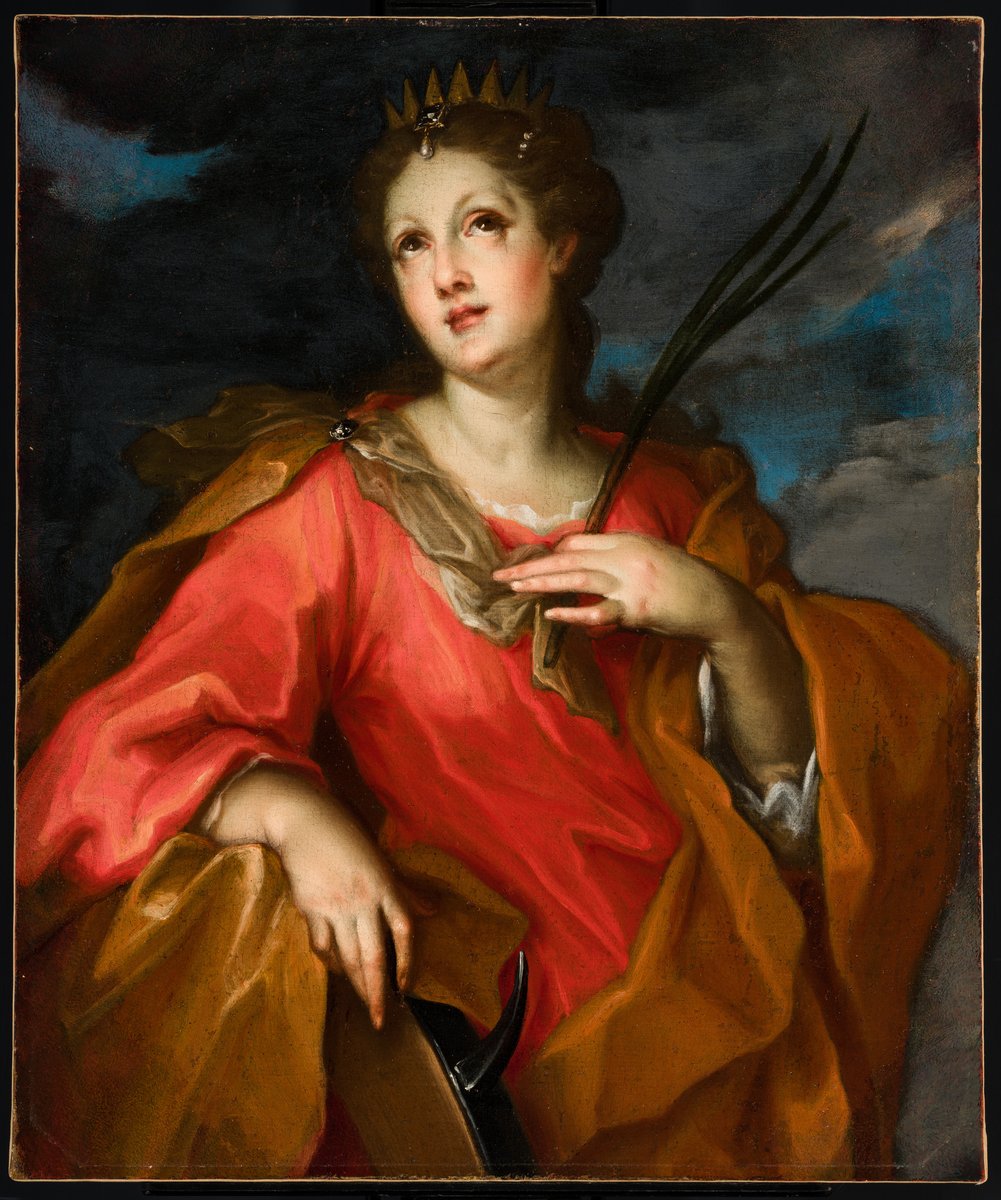
Saint Catherine of Alexandria
Old Master Paintings
| Artist | |
|---|---|
| Culture | Italian |
| Date | 1763 |
| Object type | painting |
| Medium, technique | oil on canvas |
| Dimensions | 30.5 x 44.5 cm |
| Inventory number | 78.14 |
| Collection | Old Master Paintings |
| On view | Museum of Fine Arts, Second Floor, European Art 1700-1850, Gallery XXX |
Canaletto recorded the terraferma, i. e. the mainland around Venice, the environs of Padua, Marghera, Mestre and Dolo, in his series of etchings from 1744 entitled Vedute altre prese dai luoghi altre ideate and in dozens of drawings and paintings. The picture is closely related to the engraving entitled Le porte di Dolo, the preliminary drawing of which has also survived (private collection, London).
Unlike Canaletto’s larger panoramas, this picture has a narrow focus, showing the sunken oval basin containing the closed locks at Dolo, behind which gondolas appear, hardly ruffling the still water. At the left, a house, containing a butcher’s shop with a sign board and outdoor shrine, blocks the view. The foreground is enlivened with staffage including a lacemaker and a fruit vendor and a group of people at the foot of the bridge.
This intimate and nostalgic painting is unusual in Canaletto’s oeuvre and is characterized by the emphatic use of chiaroscuro, subdued coloring and distinctively calligraphic brushwork. In contrast to the sunlit side, the foreground is almost completely in shade, in conformity to the notation “per l’ombra questo” (“this area in shadow”) which appears on the handrail of the bridge in the preliminary drawing. By means of contrasting light and shadow, the house roofs and foliage become a patchwork of light and dark colour. Canaletto merely delineates the hands and faces of the figures with the tip of his brush. The marionette-like figures are animated by this deft applilcation of small dots and thin lines of paint.
The painting can be dated after Canaletto’s return to Italy from England, which is presumed to have taken palce in 1755. Canaletto’s use of his etching of the 1740s is entirely characteristic of his working method. A number of mainland views by the artist of similar date share the same dimensions and it may be presumed that this painting was originally accompanied by at least one companion piece. The painting has two more autograph versions: one in a private collection in Padua, the other, owned till 1920 by the great French collector, Alfred Beurdeley, has recently surfaced in London art trade.
Text: © Zsuzsa Dobos
This record is subject to revision due to ongoing research.